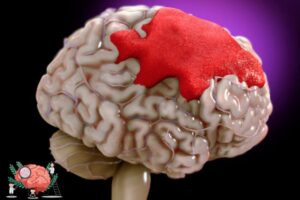A brain haemorrhage is a rupture of a blood vessel (usually an artery) that causes bleeding in and around the brain.
Brain haemorrhages differ according to their location and the severity of the damage:
Spontaneous cerebral haemorrhage: associated with arterial hypertension, coagulation problems, tumours or formation of new blood vessels following ischemia, vasculitis, drugs or central nervous system infections, among others. It may be an intraparenchymal or intracerebral haemorrhage, which usually affects older people. This type of brain haemorrhage accounts for 10-15% of all strokes.
Intraventricular haemorrhage: when the ventricles of the brain that contain the cerebrospinal fluid are affected. It affects premature infants, especially those who have had respiratory distress syndrome, a collapsed lung or high blood pressure. In 70% of cases, this haemorrhage is secondary; that is, it originates from an intraparenchymal haemorrhage.
Subarachnoid haemorrhage: affects young people between the ages of 20 and 40. This is a serious pathology that is usually caused by the rupture of an aneurysm, head trauma, use of anticoagulants, bleeding disorder, etc. It is common in older people who have had falls or head injuries and in young people who have had a car accident.
Subdural haematoma: this is the most common traumatic bleeding. People with this condition often go into a coma during their hospitalisation.
Epidural haematoma: this may be the result of brain trauma. In most cases, it is caused by a skull fracture in children and adolescents.
Prognosis of a brain haemorrhage
A brain haemorrhage is a serious pathology which may result in death. Brain haemorrhage has a mortality rate of 40%. The main complications occur when the haematoma expands, because of perihematomal oedema, convulsions, hyperglycaemia, arterial hypertension, fever and infection, among others. In general, the severity of each case will depend on the amount of bleeding.
Symptoms of a brain haemorrhage
The main symptoms of a brain haemorrhage according to type are:
Spontaneous cerebral haemorrhage: manifests with a headache, vomiting and decreased consciousness, among others.
Intraventricular haemorrhage: sleep apnoea and bradycardia, high-pitched cry, seizures, anaemia, swelling or bulging of the soft spots between the bones of the baby’s head.
Subarachnoid haemorrhage: vision problems, muscle aches, sudden and severe headache, loss of consciousness, and nausea and vomiting, among others.
Subdural haematoma: headache, difficulty with balance or walking, slurred speech, lack of energy, seizures, nausea and vomiting, vision problems, etc.
Epidural haematoma: the main symptoms are dizziness, confusion, nausea or vomiting, drowsiness, head trauma and weakness, among others.
Medical tests for a brain haemorrhage
The first step in detecting a brain haemorrhage is to determine what type of haemorrhage it is, and this can be learned through CT and MRI scans.
Blood tests, an electrocardiogram, carotid ultrasound, and brain angiography may also be performed to help determine the type, cause, and location, and to rule out other conditions.
What causes a brain haemorrhage?
A brain haemorrhage may occur for non-obvious reason or may be caused by a brain injury.
Risk factors for brain haemorrhage include high blood pressure, the menopause, diabetes, smoking, and alcohol and caffeine consumption.
Spontaneous cerebral haemorrhage: as already mentioned, this is usually related to high blood pressure. Some controllable risk factors are alcohol and tobacco; another factor is diabetes mellitus.
Intraventricular haemorrhage: the causes of this type of haemorrhage are not clear, although it may be due to the fact that the blood vessels in the baby’s brain are very fragile and immature. People with respiratory problems are more susceptible. Bleeding almost always occurs during the first 4 days of life.
 doctorbharatgupta@gmail.com
doctorbharatgupta@gmail.com Tower Enclave, Opp. Indian Petrol Pump, Wadala Chowk, Jalandhar
Tower Enclave, Opp. Indian Petrol Pump, Wadala Chowk, Jalandhar


